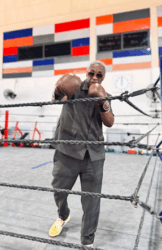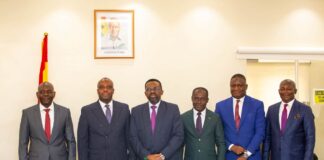Experiential marketing is one of many tools available for the brand manager to engage consumers and potential consumers. However, ensuring that consumers get a whole new amazing experience is another issue.
In the business of experiential marketing, we are constantly looking for new ways to engage consumers and build brand awareness.
While brands put a lot of effort into curating an experience for their consumers, a lot of the success comes when the experience is engaging and consumers themselves are drawn to the experiential process.
This year, our major experiential activation as an agency has been the Coca-Cola Zero Gravity Experience, which happened to be the main pull-factor for re-launching the Coca-Cola Zero Sugar product to Ghanaian consumers.
When Coca-Cola Zero Sugar was being reintroduced to the Ghanaian market, the team had to find answers to what a product launch would mean for a brand that needs to appeal to many – but largely to a younger audience who are digitally plugged-in, fun and crazy about selfies.
Coca-Cola’s brief to EchoHouse Ghana Limited – the 360 marketing communications agency hired to activate Coke Zero – was simple: Coke Zero was coming back into the market with a New and Improved Taste.
In order to gain the maximum impact they wanted from their product launch, they needed consumers to take a second look at it, taste it and share the new and improved taste with the world.
To achieve this, the team at EchoHouse Ghana Limited knew the execution had to go beyond digital – and instead pull off a disruptive experiential activation that would get young consumers gravitating toward the event, and the brand as well.
EchoHouse activated Coca-Cola Zero Gravity Experience and provided the following insights for the marketing communications industry.
Activate for your consumer, not the brand
The key part of the activation, digital or offline, is how consumers and potential consumers interacted with the activation. The activation’s success lies within how it was received by the consumers. That is why it’s essential to build an experience the consumers will love and not one that is necessarily ideal for brands’ executives.
Focus on what your consumer cares about
Understanding your consumer is a very key aspect of any marketing activity. However, doing this extremely well is very important when you are going to host an event and you expect consumers to turn up. This means you need to have something compelling beyond just hosting an event. It must play on something they love beyond your product. With young people so engrossed in photography, and always on the lookout for the most amazing photo of themselves to share on social media, it was smart to build an experiential event centred on photography.
Go all the way
However, just setting up a ‘studio’ and asking consumers to show up and take photos is not a compelling pull-factor. The execution must be daring, new, exciting and evoke all the positive feelings you want your consumer to have about your brand. The experiential idea was Zero Gravity. We wanted to celebrate the freedom that today’s consumer craves and enjoys. A world that’s without barriers. We tapped into the trend of photography and built a Zero Gravity experience that had people from different parts of Ghana trooping into the experience and sharing their images. The setup alone provided enough awe, the process of the photo-taking added activity, and the final photo itself brought a real magic moment to life.
Land the idea
This is where the experience and consumer journey play a key role. This is also where the brand can play around with its core messaging in a way that is creative, subtle and at the same time forward. Highlighting Coca-Cola’s three key messaging touchpoints – meals at home, meals away from home, and screen time – the team built an experience that took consumers on this journey through Coca-Cola’s messaging. The messaging on digital also played on the Zero Gravity idea. Before launching the product, all the messaging online came with upside-down captions and upside-down creatives. This provided some form of context and mystery in equal measure, and it also made consumers curious about what Coca-Cola Zero Gravity was about.
Results
One key reason why brands undertake offline activations is getting consumers to interact and engage with the brand offline, and then amplify that interaction on digital platforms.
First of all, consumers showing up at the brand event is a win for the brand, which then provides an opportunity to sample the consumers and get them to try the product.
The three-day launch’s impact was witnessed in real-time, as thousands of consumers were sampled and tasted their first Coca-Cola Zero Sugar.
Though the engagement was on-the-ground, digital amplification of the product launch achieved a reach of 4.9 million users on Twitter alone.
The activation also proved that product launches can have a significant impact on the target market beyond awareness creation.
It also provided a road map for brands to achieve relatability with their young consumers by engaging with aspects of young people’s culture honestly and creatively.
Finally, it demonstrated what is possible when brands empower their creative agencies to dream: because true magic occurs when we dream!
About the author
Peter is a Senior Account Manager at EchoHouse Ghana Limited, and was the lead on the Coca-Cola Zero Gravity Experience.










